People
No.5 Mishin income-bearing property (current building completed 1907-1908)
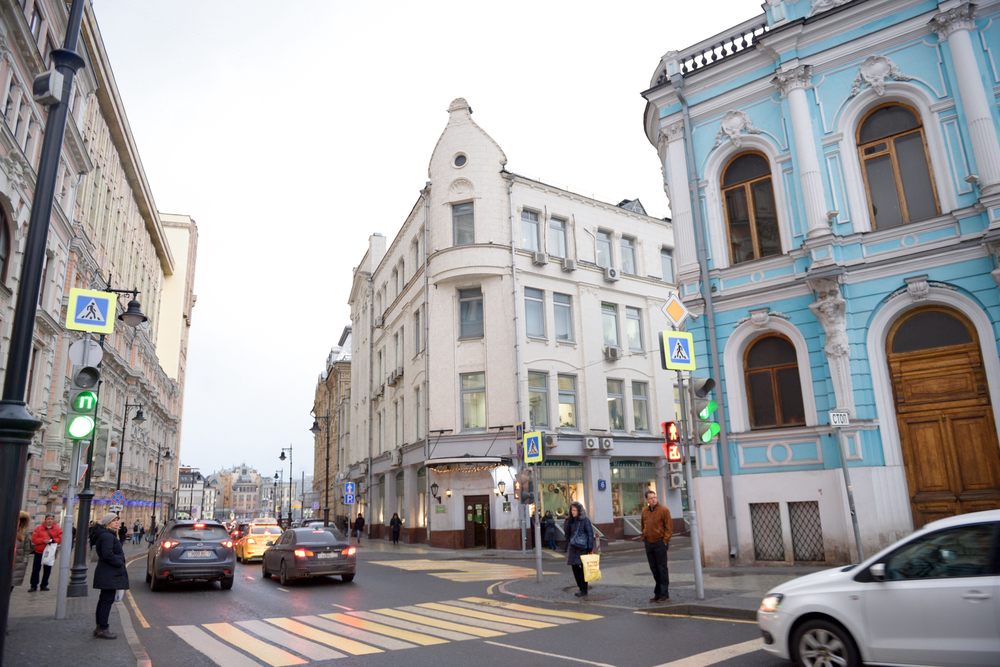
In the late 1880s, the building was owned by Gustav Andreevich Keppen, merchant and executive director at the Moscow Association for Machines, Equipment, and Engines (founded in 1876), and member of the Moscow Department of the Imperial Technical Society.
From 1900-1901, Vladimir Ivanovich Yakovenko, a well-known psychiatrist, initiator of the first census of mentally ill people in Moscow and other governorates (the basis for the first statistics regarding mental illness), lived here. He was well acquainted with Chekhov, and the two discussed issues relating to medical work in rural areas.
In 1894 he was appointed manager of the construction work to build a rural psychiatric hospital in the village Pokrovskoe-Meshcherskoe, in Podolsk district, Moscow governorate. The hospital was presented at the International Hygiene Exhibition in Dresden as one of the finest in the world, and in 1913 was given the highest award at the Russian national hygiene exhibition. Today, this serves as V. I. Yakovenko Moscow Region Psyciatric Hospital No. 2. Yakovenko headed it until 1906, when he was dismissed for revolutionary activity and sent to the Poltava governorate, where he continued his medical work.
No. 7 Bldng 2. Chertkov House
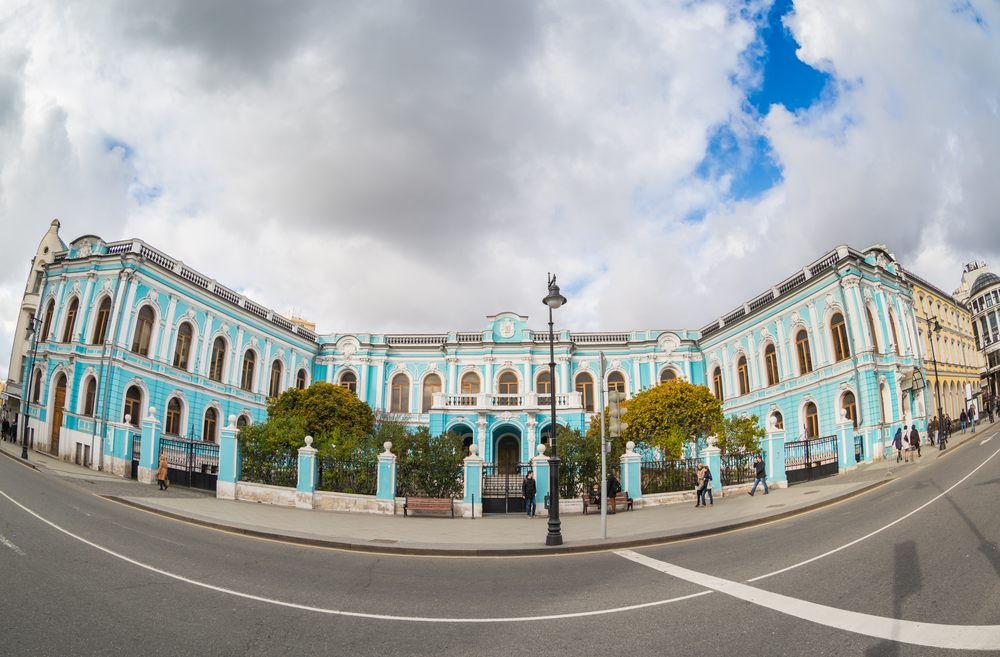
From 1831 Alexander Dmitrievich Chertkov, Moscow Province Marshall of Nobility, renowned bibliophile who built up an immensely valuable library, lived and worked here.
Chertkov was a real connoisseur of printed primary sources on the history of Russian antiquities and made an invaluable contribution to the history of historical books. Chertkov was also a renowned numismatist, and was the first to classify Russian coins. He also carried out archaeological digs in the burial mounds near Moscow. Chertkov headed the Society for Russian History and Antiquity at Moscow University, and members would meet at his home.
Chertkov built up a vast library, which was later made city property. Historian and literary critic Petr Bartenev was appointed director of the library. He advised Leo Tolstoy on historical details while the Russian author was writing War and Peace, and collated stories about Pushkin as told by his contemporaries – publications comprised of first-hand sources about the poet. Bartenev used the funds left by Chertkov to produce the literary-historical publication ‘Russian Archive’ which published documents viewed as valuable by historians and researchers.
Over the years 1862-1865, meetings of the Society of Russian Doctors, headed by renowned doctor Fedor Inozemtsev, were held, gratis, at the property. Inozemtsev was the first Russian doctor to operate using ether anaesthesia. He studied together with Nikolai Pirogov, and they went on to both complete medical internships together in Europe and work together there, after which Inozemtsev became one of the initiators of the wide-ranging reforms to Russia’s educational model along western lines. He was a popular doctor, and treated around 6,000 patients in a year, including as a general practitioner. He developed the idea of milk and dairy products’ use in treatment, which he described in his work “On the treatment of colds and associated diseases, and gastrointestinal fever, with milk.”
After the revolution, the Dzerzhinsky Moscow House of Scientific and Technical Propaganda was located in the building. Renowned scientist Ivan Artobolevsky, USSR Academy of Sciences academician and professor of Mechanics at Moscow State University, worked here. He created approaches to kinematic analysis of complex multilink mechanisms, and was also an outstanding teacher.
During the Soviet period, this building was home to a number of organizations and societies, including Znanie.
#Literary Myasnitskaya #Academic Myasnitskaya # Architectural Myasnitskaya #People
No. 13. Income-bearing property owned by S. Davydova, Kh Spiridonov, buildings dating from the 18th-20th centuries
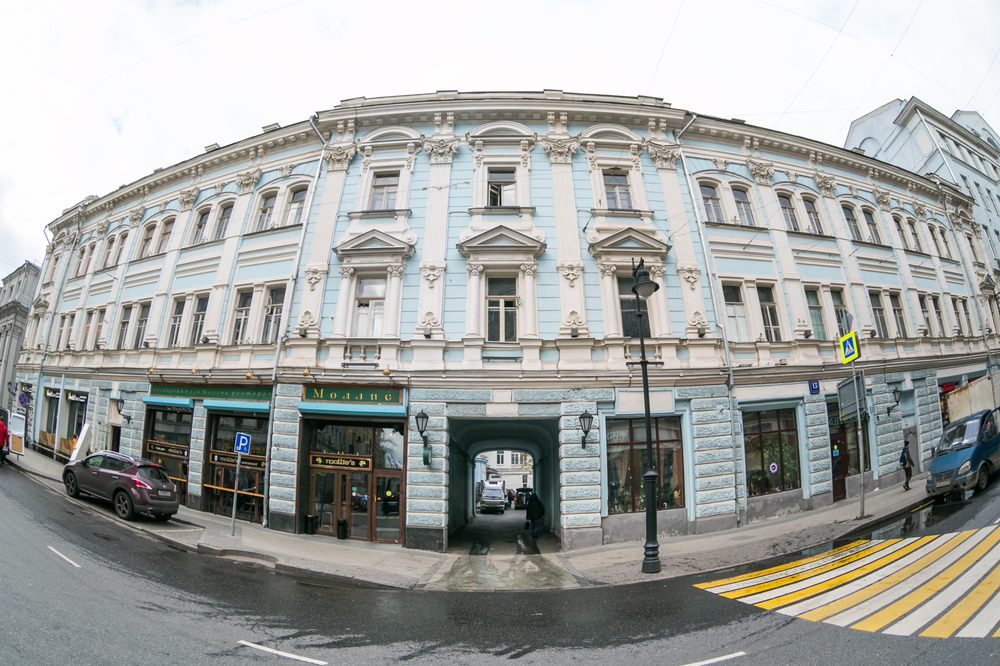
In 1825 the School for Drawing as it Relates to Arts and Crafts opened here (School of Technical Drawing), founded by the well-known philanthropist Count Sergei Grigorievich Stroganov.
He believed that the ‘art of drawing’ was as vital for people in the technical professions as it was for artists. Today this school is called the S. G. Stroganov Moscow State Artistic and Industrial Academy.
As Chairman of the Moscow Society of Russian History and Antiquities, Stroganov would personally pay to equip his annual scientific and archaeological expeditions to southern Russia. One example of discoveries made during these digs in Crimea include the Kerch treasures and Scythian Gold, currently stored in the Hermitage.
At various times the following people lived here:
Ivan Vasilievich Rylskii – member of the USSR Academy for Architecture, Professor, Doctor of Architecture, Restorer, one of the initial people who proposed creating a Shchusev Museum of Architecture in Moscow. Taught at VKhUTEMAS, where from 1925 he served as dean of the architecture faculty, and from 1934, headed its educational section.
Vladimir Konstantinovich Malmberg – historian, archaeologist, director of the Museum for Fine Arts (currently the Pushkin Museum For Fine Arts) in 1913-1921, early 20th century.
Alexey Nikolaevich Sysin – member of the USSR Academy of Medical Sciences, professor at the Moscow Medical Institute hygiene department 1914-1920s.
#Academic Myasnitskaya # Architectural Myasnitskaya #Artistic Myasnitskaya #People
No. 17. Rodina (Motherland) Furnished Rooms
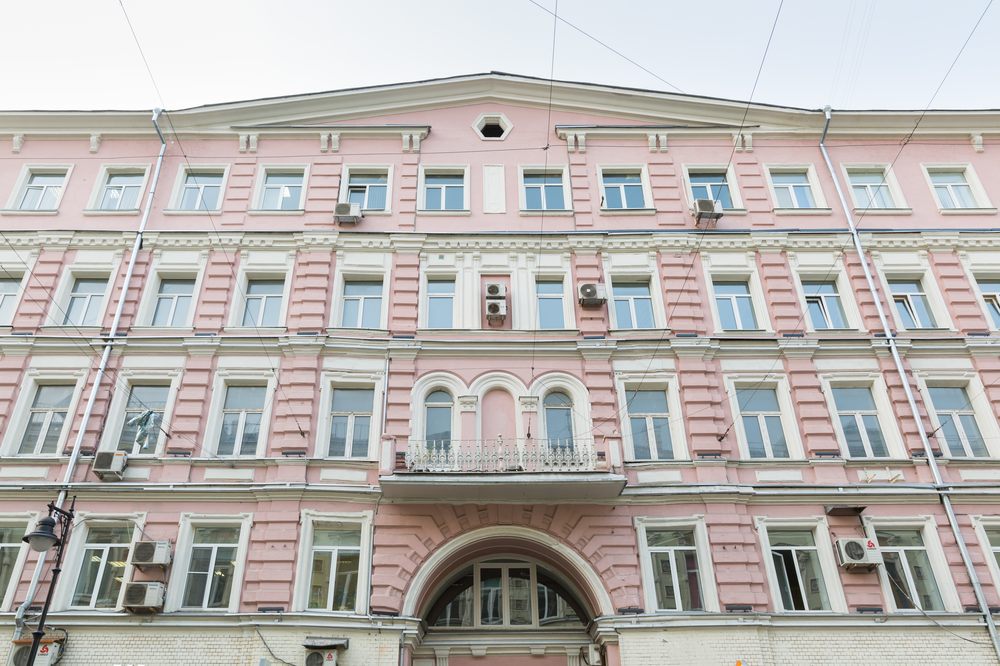
In the late 19th century, this building housed the ‘Rodina’ (Motherland) reasonably priced furnished rooms arranged in corridors. At various times they were home to the sculptor A. S. Golubkin, mathematician N. A. Shaposhnikov, Orientalist and academic M. O. Attaya. This was a popular, convenient and cheap way of living in Moscow at that time. The artist Ilya Repin liked to stay here, and in 1884 settled here, which made sense since he would visit his friend V. D. Polenov, who also lived on Myasnitskaya Street, and was exhibiting his work at the School of Painting, Sculpture, and Architecture.
The following people also lived here:
Lazar Solomonovich Minor – Medicaldoctor, director of the neuro-pathological clinic at the Higher Women’s Courses, established the Moscow Society of Neuropathologists and Psychiatrists. His family made a tangible contribution to science: Nina Lazarevna Minor, his daughter, married the philosopher Sergei Iosifovich Gessen, his grandsons were the poet Evgeny Sergeevich Gessen and the Polish Slavist Dmitry Sergeevich Gessen, who compiled the Great Polish-Russian Dictionary and the posthumous collection of S. Barthes’ literary heritage.
Alexander Solomonovich Khakhanov – Professor of Georgian literature at the Lazarev Institute of Oriental Languages, freelance university lecturer at the History and Philology Faculty at Moscow University, author of the first systematic course in the history of the Georgian language.
Artur Ferdinandovich Loleit – engineer, developed a technique for calculating reinforced concrete structures during destruction and one of the founders of the Soviet scientific school of reinforced concrete theory.
Adolf Noorbertovich Zeligson – architect, member of the Moscow Society of Architects.
Grigory Ivanovich Makaev – architect, developed the plans for the northern wing of the Polytechnic Museum. The income-bearing building in Podsosensky Pereulok (18/5) is considered Makaev’s greatest achievement, although it suffered during recent renovation work and has lost its sculptural decorations of vines and flowers.
Viktor Vladimirovich Nemytskii – Mathematics Professor at Moscow University, author of a number of works on differential and integral equations and functional analysis, 1920s-1930s.
Irakli Luarsabovich Andronikov – literary scholar, Lermontov researcher. In the 1960s, the whole country watched Andronikov’s outstanding lectures about the poet. His talks were recorded by USSR Central Television. Kornei Chukovsky, who wrote a book about Andronikov, recelled: ‘Whenever you enter the manuscript department of Leningrad Public Library, or Pushkin House, or the Academic Section at our own Lenin Library here in Moscow, you will surely see Andronikov immersed in manuscripts, books, and newspapers, all bearing some kind of relationship to the poet, however distant.’
No. 21 Yushkov House
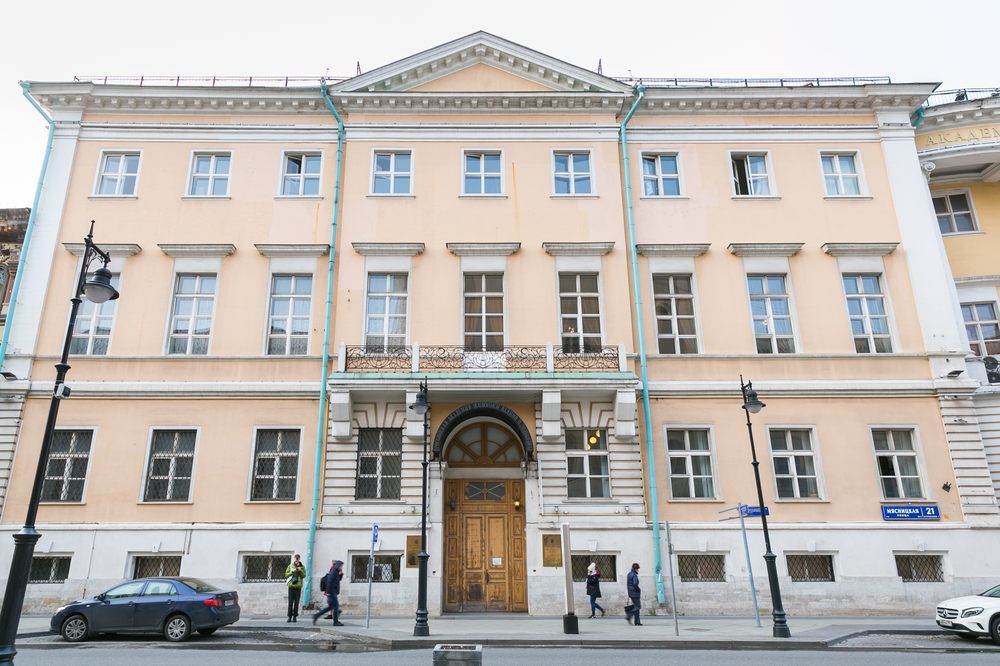
This part of Myasnitskaya street in the late 18th century was owned by the Yushkovs, and a neighboring side street was named after them (now Bobrov).
In 1780 the estate was bought by Ivan Ivanovich Yushkov, and the current building was constructed. In 1838 one of the halls in the building was leased by the Moscow Society for the Arts for its ‘Public Drawing, Landscape and Sculpture Classes’, and there were also apartments – including some for artists.
For 16 years the building was home to the Pasternak family. Each spring the school hosted exhibitions of work by the Wanderers (Peredvizhniki), and at one of them the artist Leonid Osipovich Pasternak (Boris Pasternak’s father) met Lev Tolstoy. Pasternak subsequently illustrated the novels War and Peace, and Resurrection, and also completed family portraits of the Tolstoys.
No. 6. Building rented out by N.D. Stakheev, architect M.F. Bugrovsky, 1897 (extension 1986)

In 1896, the building’s owner was Nikolai Dmitrievich Stakheev, philanthropist and gold industrialist, who became the main advocate of the art of I. I. Shishkin. This was not entirely surprising – Shishkin was his uncle. The Stakheev family were well-known for their interest in art and as collectors. They were educated people who in the early 1870s established the ‘Charitable Brothers D. and S. Stakheev Committee’. The Committee’s budget boasted hundreds of thousands of roubles, spent on the construction of educational institutions and shelters for those in need, and for the education of children and those in need.
Nikolai Dmitrievich Stakheev never lost sight of his interest in philanthropy, even though he travelled frequently and fell into begging: in 1908 – to the horror of his friends and relatives – he lost 15 million gold roubles in a Monte Carlo casino, a stratospheric sum for that time. Stakheev ordered the construction of 11 buildings in Moscow, including that on Myasnitskaya, from the architect Mikhail Fyodorovich Bugrovsky. Thus it was that the new multi-story building with apartments and shops appeared on the site of the old building.
No. 8. Porcelain House
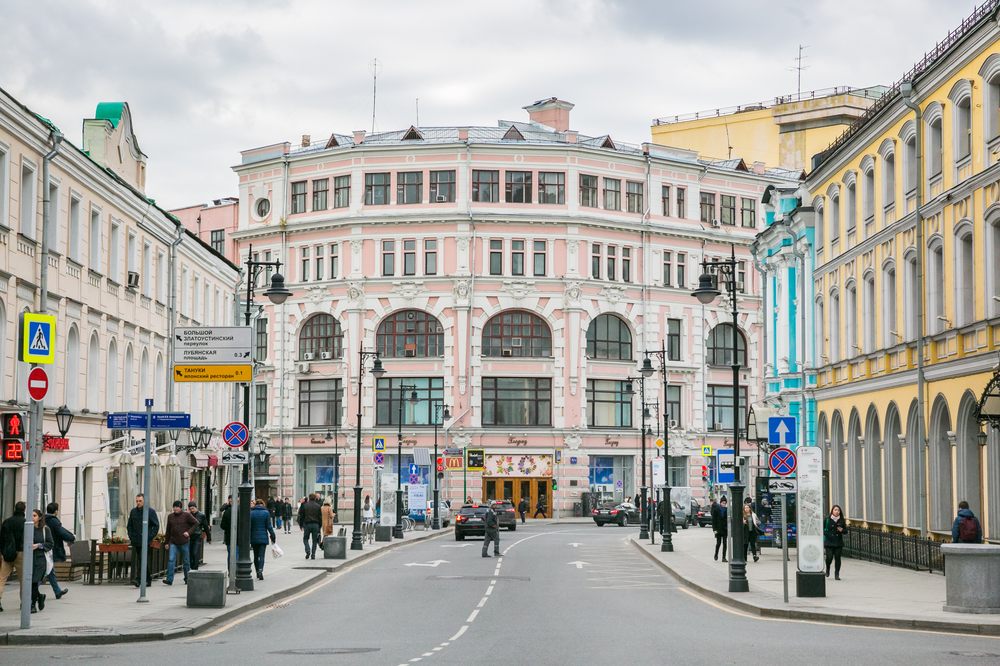
In 1830 Moscow University professor and member of the St Petersburg Academy of Sciences Mikhail Pogodin moved in. An historian, journalist, and publisher, he was a very active figure in society, and was known as a progressive. He would play host to famous guests including Alexander Pushkin, Nikolai Gogol, Mikhail Shchepkin, and Sergei Aksakov, and he prepared Afanasy Fet for his university entrance exam, held literary group meetings and editorial meetings for his journals here. Later, Tsar Nicholas I asked Pogodin for advice over the Crimean Wars, and in 1852, the Tsar bought Pogodin’s collection of antiques for the state, paying 150,000 rubles in silver. The manuscripts were passed to the Public Library, and the archaeological and numismatic parts of his collection went to the Hermitage.
In 1873, the teacher Alexander Chugaev took up residence in the building. He was the father of Lev Chugaev, the renowned chemist and professor at Moscow Higher Technical School, St Petersburg Technological institute, and the founder and director of the Institute for the Study of Platinum and Other Precious Metals. He gave his name to the L.A. Chugaev Prize, still awarded to this day by the Russian Academy of Sciences in recognition for outstanding work in the field of chemistry and organoelement compounds. Chugaev’s early work focused on bacteriology and biochemistry. He discovered a sensitive reaction to E Coli, differentiating it from the Typhoid bacteria. Ironically, he died from Typhoid in 1922.
No.20. Building rented out by the heirs of the merchant Ananov
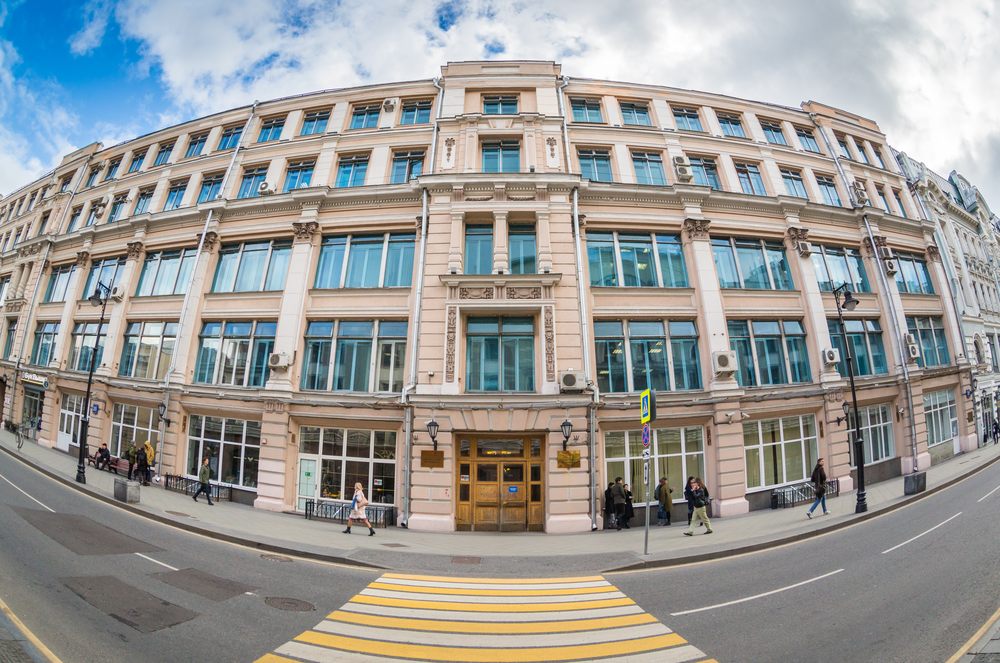
In the early 20th century it was rented by a number of people including the Chief Office of Engineer Alexander Bari, one of the first engineering companies in Russia. Bari was a close friend of Lev Tolstoy, Dmitry Mendeleev, Nikolai Zhukovsky, who worked in his office alongside the outstanding engineer and architect Vladimir Shukhov, who was their technical engineer.
In 1862 Bari’s father, who was exchanging letters with Karl Marx, was forced to emigrate to Zurich, where his son Alexander received an outstanding engineering education. Abroad, Bari and his brother produced electric engines and decided to return to Russia to develop the oil sector. The oil plant that Bari opened in 1880 hired Dmitry Mendeleev as a consultant on technical and chemical aspects of production. In the construction bureau and at the plant, Alexander Bari ‘introduced an entirely new approach to work’ – salaries were 10% higher than at other plants, the working day was shorter, the company provided food and paid sick leave. Bari really pioneered effective management in Russia.
#Academic Myasnitskaya # Architectural Myasnitskaya #Persons
No. 22 Building rented out by the Sytov merchants, with a workshop that produced church ornaments and brocaded fabrics, architect A.N. Knabe, 1873-1900s.
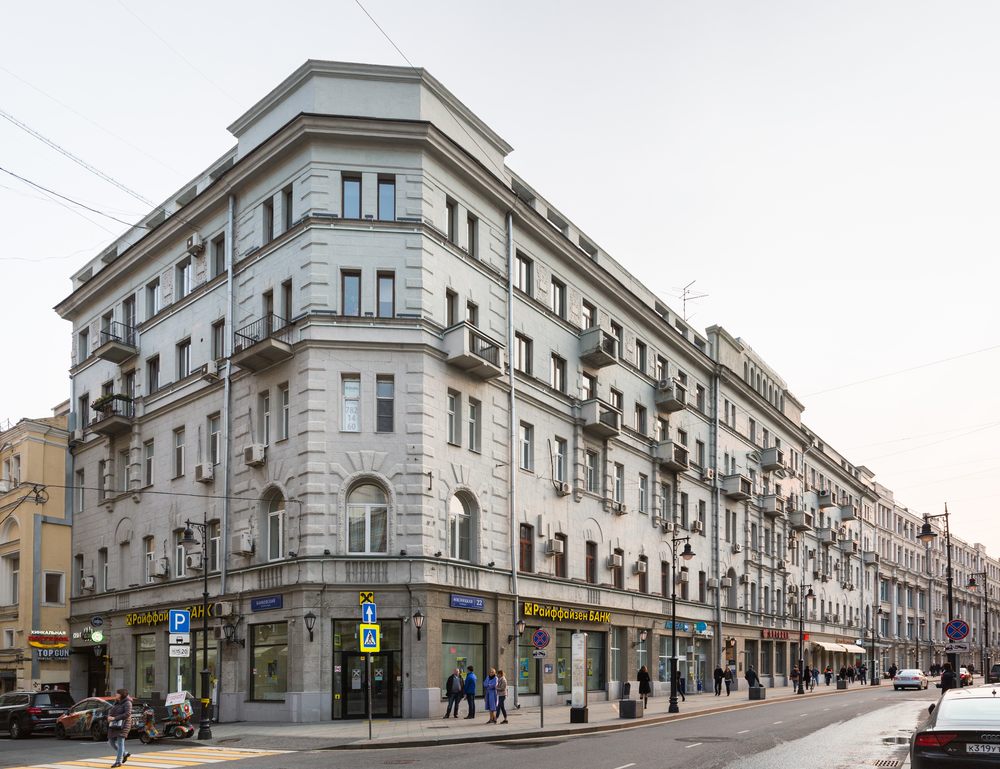
In the 1890s the property was home to the Shtikh family. The head of the household was Moscow’s leading ENT specialist, Lev Shtikh, whose son was close friends with Boris Pasternak, who lived nearby. Shtikh had graduated from the Medical Faculty at Moscow University, and his fellow doctors chided him for seeing so many non-fee-paying patients – a good third of the people in his reception area were being treated for free and would leave his consulting room holding ten or fifteen kopeck coins for the medicine.
After the revolution, the Shtikhs’ apartment became home to seven families. In the 1950s Pasternak visited the Shtikhs in their one remaining room, and then they were asked to leave. Lev Shtikh’s son Alexander was appointed Chairman of the Gubernatorial Soviet of People’s Deputies after the revolution, his son Mikhail wrote about Lenin in the newspaper Soviet Russia, and in recognition of his propaganda Lenin personally issued an order that the Shtikhs should be allowed to remain in their flat, since the family was ‘serving the Soviets’.
Sergei Smolitsky wrote about the turbulent and sometimes tragic fate of this building and its inhabitants in his book On Bankovsky.
The following people also lived in the building:
Alexander Petrovich Artari – Curator of the Moscow University Herbarium, freelance lecturer in botany at Moscow University in the early 20th century. In his youth he attended lectures at Moscow University, and a little later received a DPhil in Botany in Basel. Most of his research was devoted to the study of aquatic flora, especially in salt-water bodies, and he discovered a new alga that was named after him – Asteromonas gracilis Artari.
Dmitry Ivanovich Yavornitsky (Evarnitsky) – historian, archaeologist, ethnographer, folklore specialist, member of the Moscow Archaeological Society, one of the most significant researchers into the history of the Zaporozhye Cossacks. In St. Petersburg Yavornitsky met the artist Repin, and it was following consultation with him that Repin started work on the painting ‘Zaporozhye Cossacks Write a Letter to the Turkish Sultan’, which features Yavornitsky – who posed for him – as one of the clerks. Yavornitsky also inspired Nikolai Lysenko to compose the opera Taras Bulba.
No. 24, Building rented out as Strognov School for Technical Drawing, architects A.E. Veber (1880-1883) and F.O. Shekhtel (1906)

In 1843, it was used by the Stroganov Drawing School. There were also apartments in the building, which were rented out to people including:
Georgy Viktorovich Wulff – scientist, crystallographer, freelance lecturer at Moscow University, professor at the A. L. Shanyavsky People’s University, where he established a crystallography laboratory.
Agafangel Efimovich Krymsky – Professor at the Department of Literature, Lazarev Institute of Oriental Languages, outstanding Arabist, Turkish specialist, and researcher into the language and culture of the Crimean Tatars. A philatelist, he became known as a specialist in postal payment symbols issued by the Russian Society for Shipping and Trade.
Vladimir Nikolaevich Obraztsov – Professor at the Moscow Institute of Civil Engineers, founder of the science of designing stations and railway hubs, founder and head of the Railway Operation Faculty at the Moscow Institute of Transport Engineers. Obraztsov was one of the first to propose and develop the idea of children’s railways and from 1936 chaired the Council to Support the Construction of Children’s Railways. His son, Sergei Vladimirovich Obraztsov, was founder and artistic director at the Puppet Theater, was born and raised on Myasnitskaya, and studied at a proper school before completing his education at VKhUTEMAS.
Nikolai Silvesterovich Kurdyukov – Tutor at Moscow School of Painting, Sculpture, and Architecture, inspector at Stroganov School, modernist architect. His father was a tram conductor, but that in no way prevented his son from enrolling in school, or later teaching there. Kurdyukov was a renowned polyglot, and in 1910 completed the first ever translation into Russian of the History of Architecture by O Shuazi.